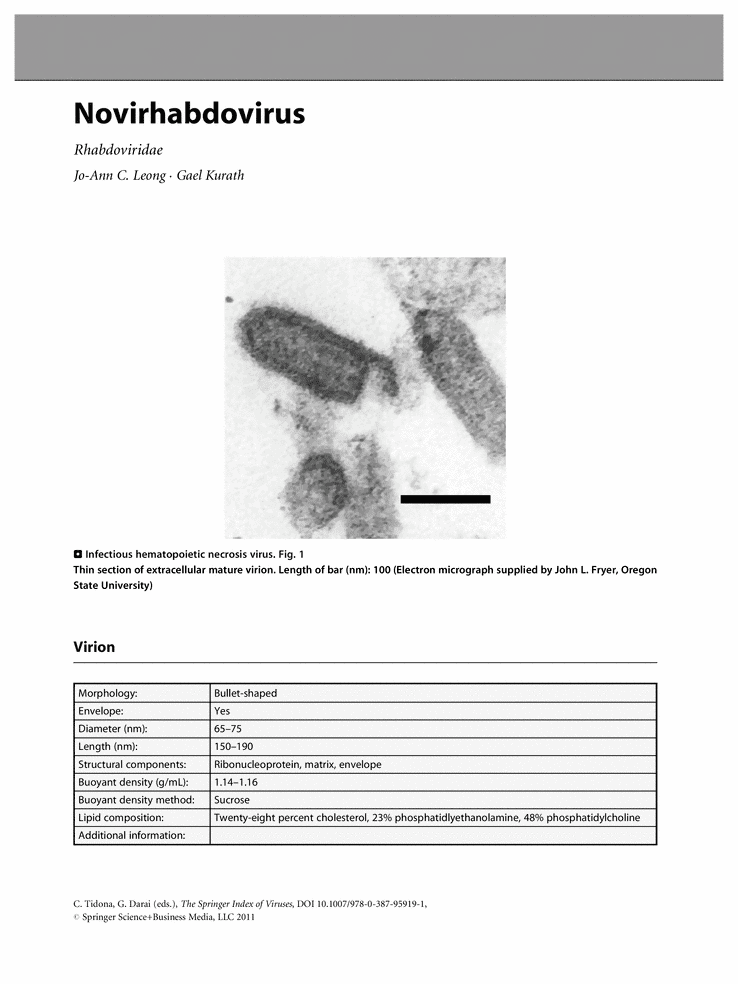Group Group V ((−)ssRNA) | Rank Genus | |
 | ||
Similar Rhabdoviridae, Infectious hematopoietic necrosis, Mononegavirales, Henneguya zschokkei, Dactylogyrus vastator | ||
Medical vocabulary what does novirhabdovirus mean
Novirhabdovirus is one of the genera of the family Rhabdoviridae containing viruses known to infect aquatic hosts. They can be transmitted from fish to fish or by waterborne virus, as well as through contaminated eggs. Replication and thermal inactivation temperatures are generally lower than for other rhabdoviruses, given the cold-blooded nature of their hosts. Hosts include a large and growing range of marine and freshwater fish.
Contents
A common characteristic among novirhabdoviruses is the NV gene, an approximately 500-nucleotide-long gene located between the glycoprotein (G) and polymerase (L) genes. The expected protein encoded by the NV gene is not found in the virions, leading to its being named a "nonvirion" (NV) protein. This is the origin of the genus name Novirhabdovirus.
Taxonomy
Table legend: "*" denotes type species.
The four classified viruses of the genus are Hirame rhabdovirus, currently isolated to Japan, infectious hematopoietic necrosis virus (IHNV), enozootic to North America but now present in Europe and Asia, as well, viral hemorrhagic septicemia virus (VHSV), enzootic to Europe, but now present in North America and Asia, as well, and snakehead rhabdovirus (SHRV). Two tentative members of the genus, identified the Seventh Report of the ICTV, are eel virus B12 (EEV-B12), and eel virus C26 (EEV-C26).
